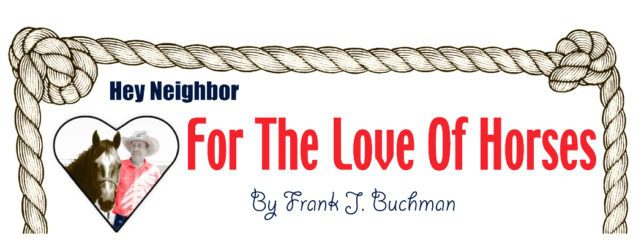It may not be new under the sun.
However, the Gypsy Cob Pinto is a horse not very familiar to people of this country.
Yet, the horses are common in the United Kingdom.
The family of Stevie and son Steve Down has been breeding the utility horses for many years.
“We have more than 1,000 Gypsy Cob mares, and their lineage goes back to horses my great grandfather raised,” explained Stevie Down of SD Farm at the recent 2011 International Equine Judges Seminar in Oklahoma City.
His discussion was during the Pinto Horse Association of America judge’s session at the weeklong annual training hosted by the Color Breed Council, Inc.
Darrell Bilke, chief operating officer of the Pinto organization, introduced the father and son along with Wylleen May, their partner breeding Gypsy Cob Pintos in the United States.
“The Pinto breed has had lots of successes in recent years, and our newest one is the adoption of the utility division in our registry,” Bilke recognized.
Specifically, Bilke pointed out that Gypsy Cob Pintos fit into that category.
“It is a breed type all of its own, not a stock horse, pleasure horse, pony or any other type. It’s the Gypsy Cob,” Bilke verified. “The more I learn about these great horses, the more I like them.
“Although draft horses are not allowed in the registry at this time, Gypsy Cobs that meet color requirements are eligible for Pinto registration in the utility division,” Bilke clarified.
“Show committees can include utility classes in their shows this year, and there will be a full line-up of utility classes at the Pinto World Championship Show this summer,” Bilke emphasized.. “There will both halter and performance classes.”
“There are Gypsy Cob Pinto breeders in this country, and the breed will continue to increase in popularity,” Bilke predicted.
“Most likely, there’s no family more knowledgeable about Gypsy Cob horses than Stevie and Steve Down,” insisted Bilke as he welcomed the speakers.
Although his accented English was somewhat difficult to understand, Down along with his son and May enthusiastically talked about the horses that can also be recorded in the Gypsy Horse Association registry.
“A properly put together Gypsy Cob should be built for a day’s work,” Down said. “The horse’s work was not just pulling a wagon. While that was certainly an element in the breed’s evolution, the primary job for a good Gypsy Cob was to pull a London Trolley, haul logs and work the land.
“A horse that did not have the proper make and shape would lock up before you had gone sever or eight miles down the road,” Down declared.
While photographs of the horses could be described as similar to draft horses, Down and Bilke stressed that the breed is a dual purpose utility breed under both driving and riding tack.
The discussion centered entirely around conformation, because halter evaluation will be different than characteristics of other Pinto types, but performance classes will be evaluated similarly.
“Gypsy Cobs will be in a division of their own,” Bilke pointed out.
In general, it was determined that mature Gypsy Cob horses stand 14 to 15 hands tall and weigh about 1,400 pounds.
“The Gypsy Cob should have a wide chest, a short back and a sloped shoulder that complements the angle of a well-rounded croup,” Down described. “The legs should be clean and flat in bone and joint with plenty of bone to support the body. He should never look like a light horse.
“A short pastern is a fault seen only in Gypsy Cob horses of marginal quality, and this fault can cause lameness,” Down added.
Mane, tail and leg hair feathering are a unique characteristic of the horses that is important to the breeder. “The feathers should be long, wavy and start at the knees and hocks and run down the leg ad cover the hoof,” Down revealed.
“A Gypsy cob should be kind and willing. As a breeder, I will not mate a stallion with a bad temperament,” Down stated.
While Gypsy Cobs are not all pintos, most of the horses shown in pictures were black and white tobianos and meet color requirements of the Pinto registry.
+++
